Malvella
Recently, it seems there has been confusion on iNaturalist between Malvella lepidota and M. leprosa. The differences between these two are not all that straightforward as can be read in the comments below. Most treatments include a combination of leaf-shape and hair characteristics. The characteristics, however, have many seemingly intermediate forms. This is especially problematic in the Lubbock area where many different forms can be found, though few truly reach M. lepidota.
Before I go further, there are two main hair types that need defining. One is a silvery, scaly, bead-like (lepidote) hair and the other is a shaggy hair with many branches from a central point (stellate). In addition to these, there are various intermediate hairs called sub-lepidote hairs. The type specimen of M. lepidota has lepidote and sub-lepidote hairs and leaves defined by a broad base that abruptly tapers to a long (almost as long as broad) lanceolate and acute apex. The type specimen of M. leprosa has lepidote to sub-lepidote hairs and a leaf shape that is broad and rounded with no apical process. The shallow lobes are rounded unlike many of the Texas plants. Perhaps the only difference in hairs between the two types is that the hairs are often sparse along the veins of M. lepidota and uniform in M. leprosa, but even this is inconsistent. Also, M. lepidota includes a slightly wider diversity of hairs with the sub-lepidote hairs becoming close to stellate while those of M. leprosa are more uniformly between lepidote and short sub-lepidote. The sepals of the two are slightly different. In the type of M. lepidota, they are lanceolate. In the type of M. leprosa, they are closer to ovate. This could be helpful, but it seems that most of the observations have sepals that are closer to lanceolate. The type of M. leprosa is from Cuba, so it is expected that there might be some geographic differences. However, this means that sepals aren't as taxonomically stable. The Flora of North America treatment also includes the folding of the sepals where they meet each other, but I haven't really been able to tease much out that is consistent. In the type specimens, this information is not preserved. I may try to look into it again but will focus on other characteristics for now.
All of what I discussed above makes things very difficult when trying to identify. Unless the sepal characteristic is viable, the main characteristic we must use is leaf shape. This is somewhat unpredictable as can be seen below. Gradation is not entirely complete, but close to it. Perhaps the closest distinction one can make in leaf shape is in the appearance of the leaf apex appearing as a separate lobe (i.e., added on to the base of the leaf similar to the first photo of M. lepidota or the apical leaves of the second photo of M. lepidota). This is not fully satisfactory as the young leaves in the second photo labeled as M. lepidota has broad leaves without this appearance.
Going back to hair-type, there are four main plant forms.
- stellate throughout. This was known as M. herbacea or M. leprosa var. herbacea.
- stellate on undersides of leaves, stems, and sepals; sub-lepidote or lepidote otherwise. This is M. leprosa, but differs from the type. Perhaps some odd morphs of M. lepidota (according to FNA)?
- lepidote and sub-lepidote hairs only. Includes M. leprosa (the type) and M. lepidota (the type).
- lepidote hairs only. Includes M. lepidota and M. sagittifolia
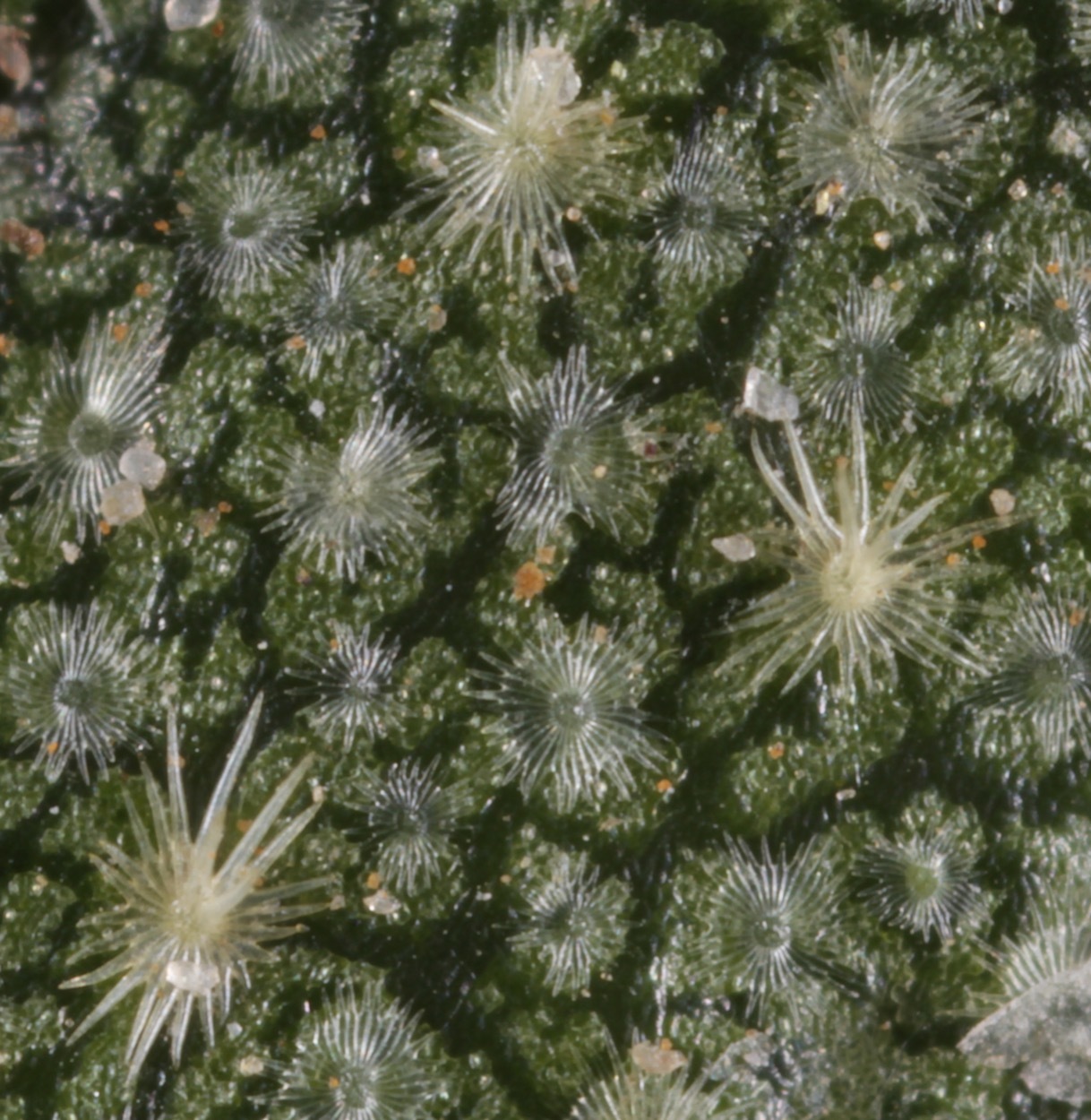
Malvella leprosa hairs from Lubbock.
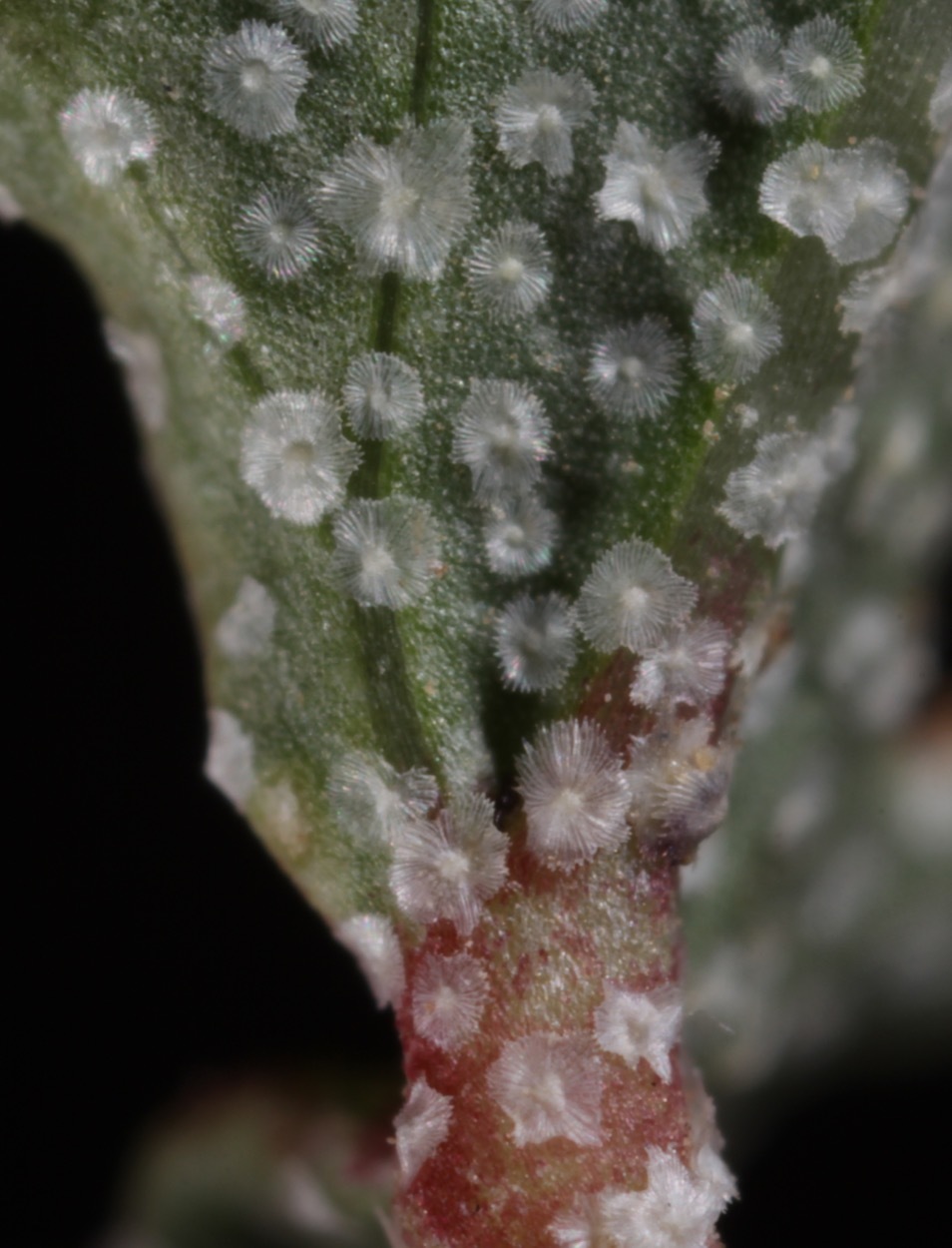
Malvella sagittifolia hairs from Alpine.
This summary only reflects the types and the US observations on iNaturalist and may need other locations to fully understand the diversity, but this is a good starting point. Now, for the examples.
Malvella leprosa
The shaggy, stellate hair form. This is what was refered to as M. hederacea or M. leprosa var. hederacea. A texas observation can be found here and here.
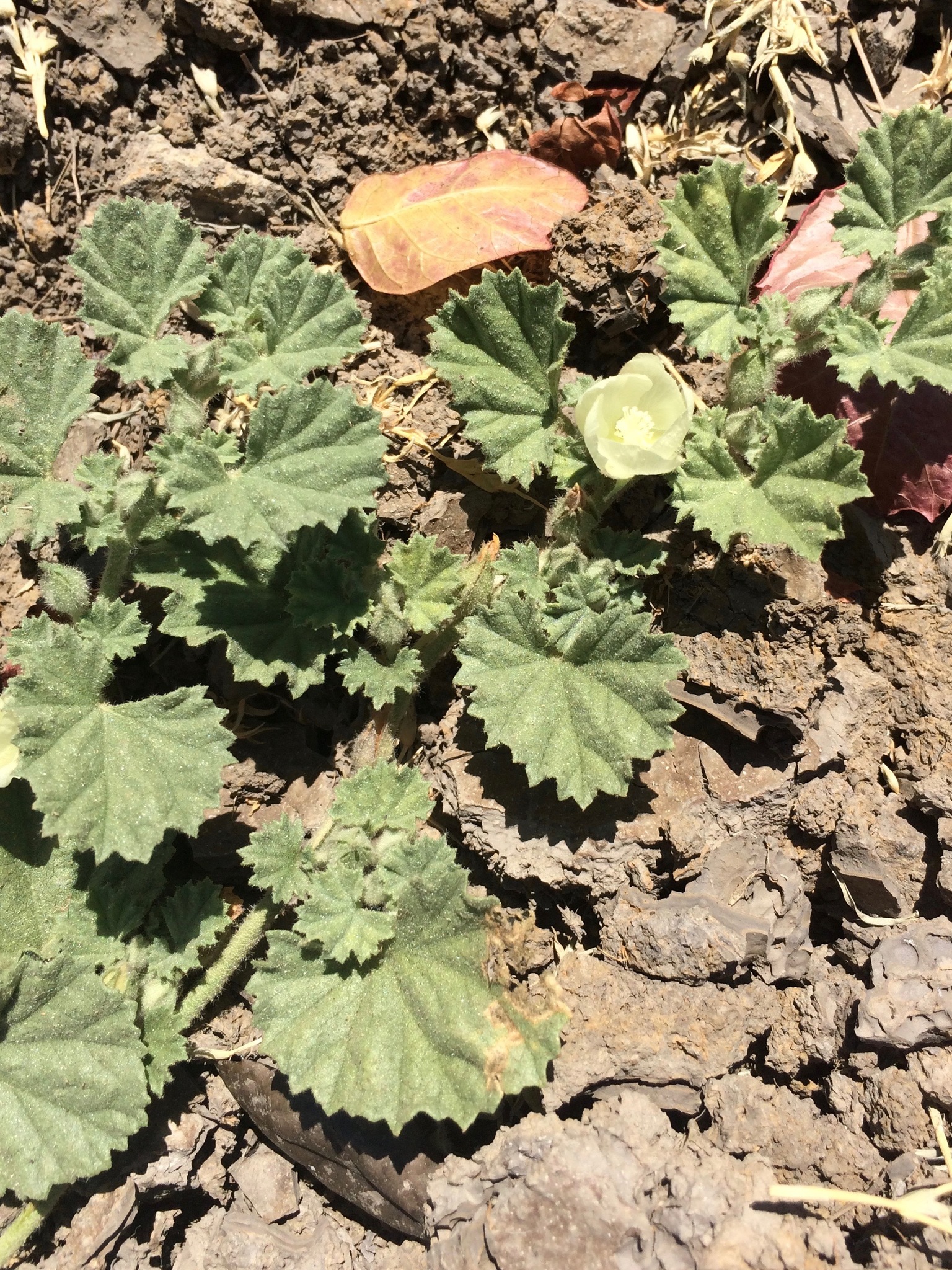
Photo credit lazarus: https://www.inaturalist.org/observations/9484575
Malvella leprosa
Stellate and sub-lepidote hairs.
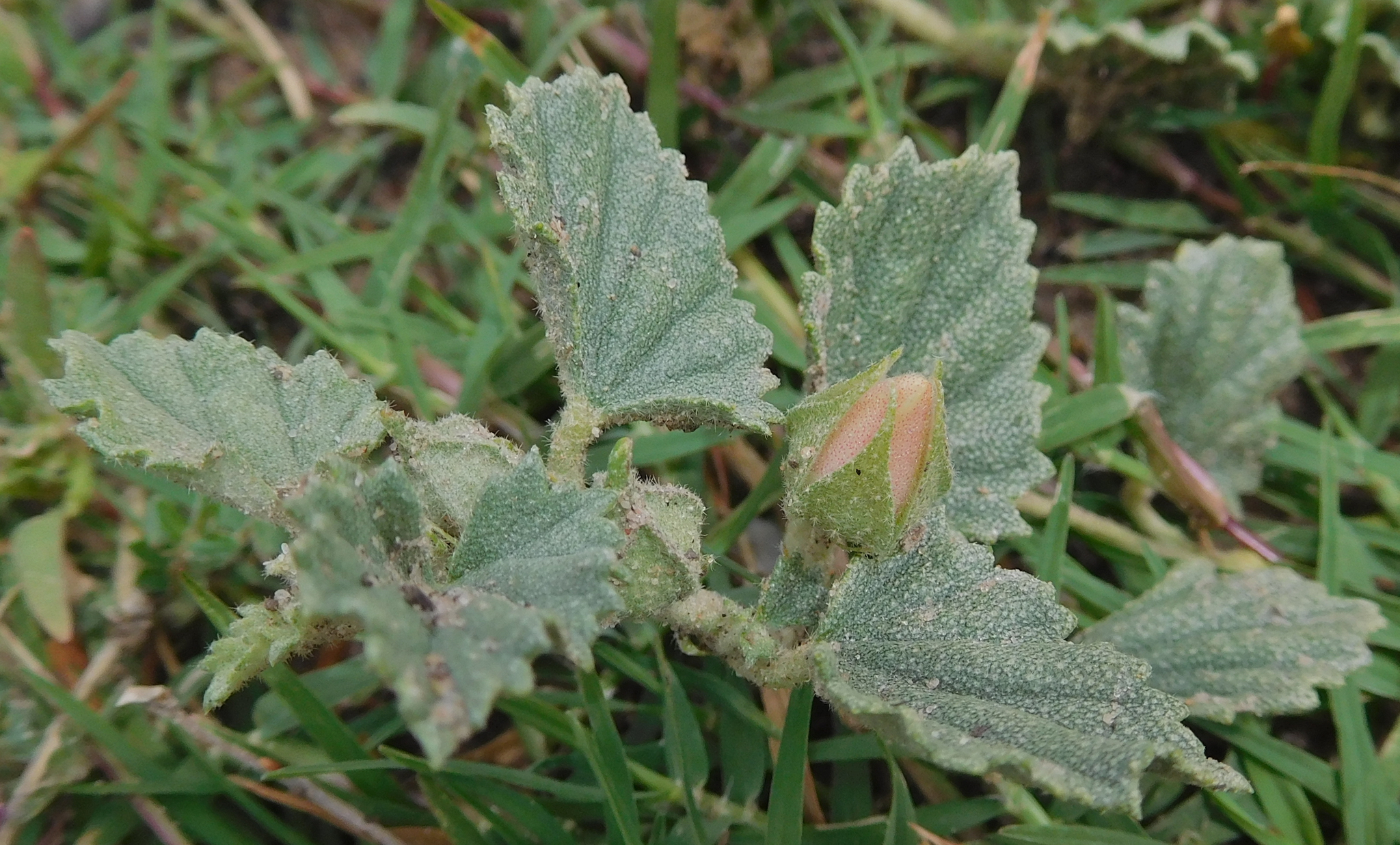
Photo credit Ellen Hildebrandt: https://www.inaturalist.org/observations/3200992
Malvella leprosa
Only sub-lepidote hairs.

Photo credit Ellen Hildebrandt: https://www.inaturalist.org/observations/2451273
Malvella intermediate?

Photo credit Ellen Hildebrandt: https://www.inaturalist.org/observations/3629472
Malvella intermediate?
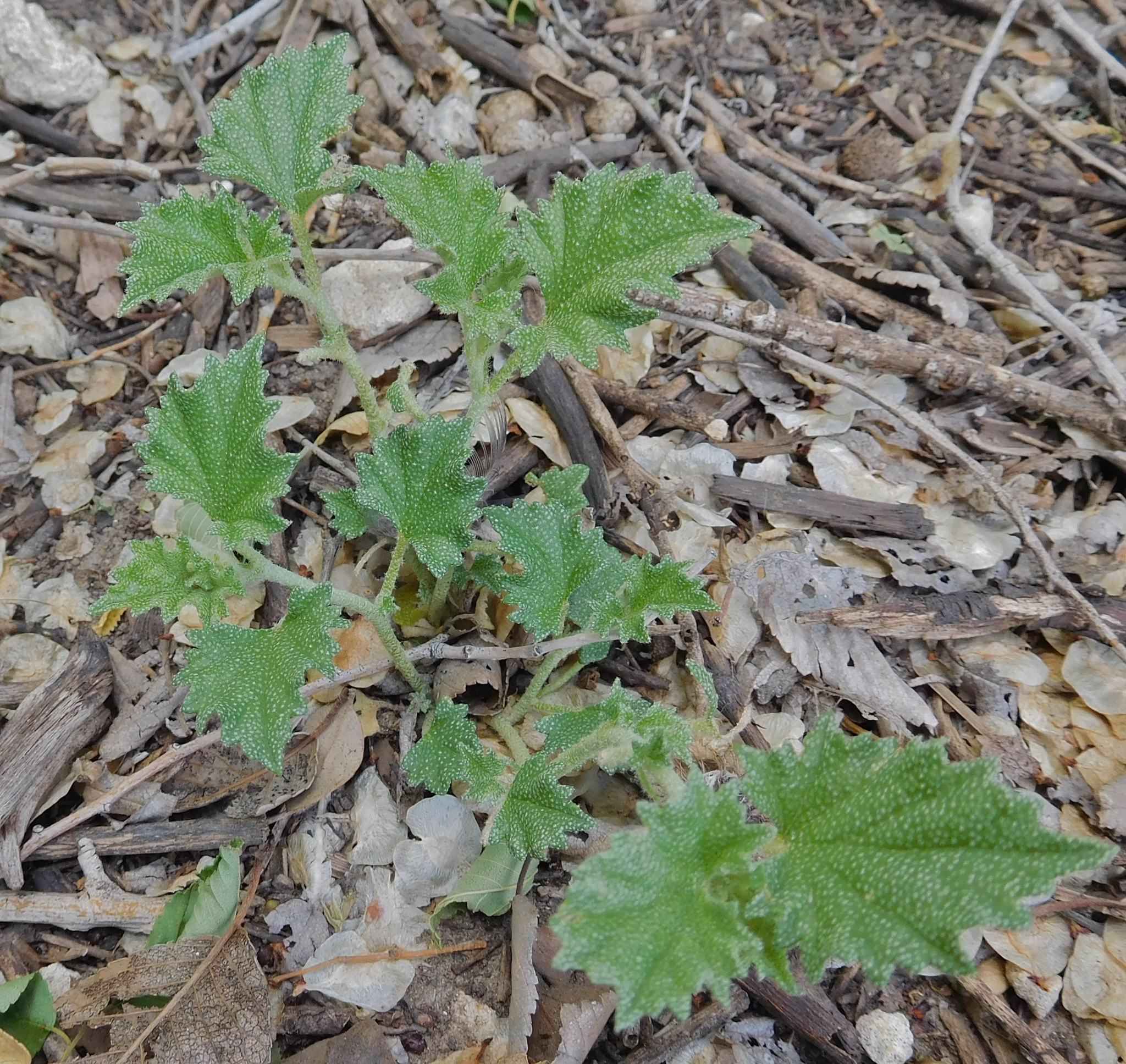
Photo credit Ellen Hildebrandt: https://www.inaturalist.org/observations/3100663
Malvella lepidota?
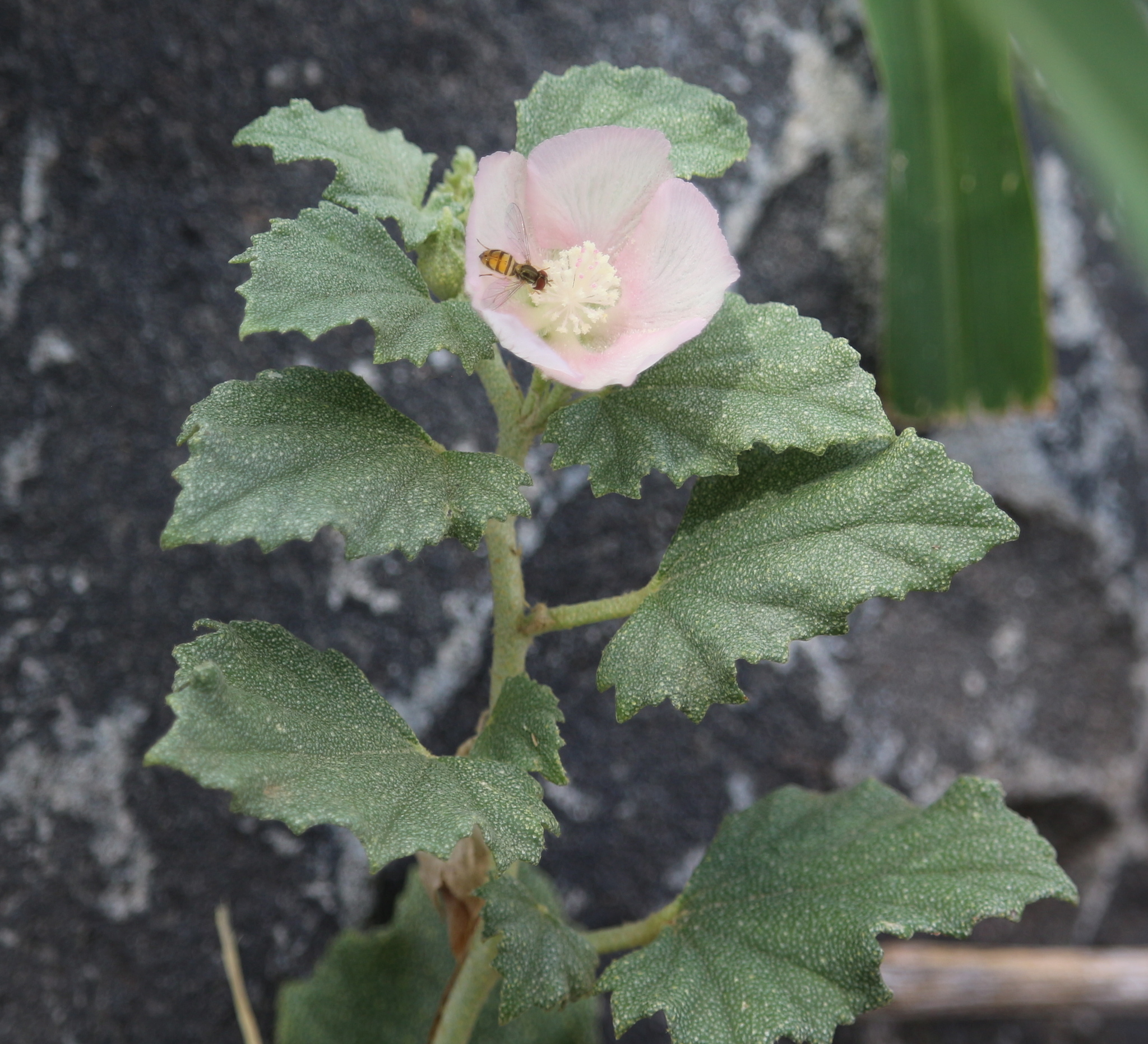
Photo credit Lena Zappia: https://www.inaturalist.org/observations/6738322
Malvella lepidota

Photo credit amawal: https://www.inaturalist.org/observations/6892282
Malvella lepidota

Photo credit Patrick Alexander: https://www.inaturalist.org/observations/9300021
Malvella sagittifolia
Lepidote hairs. On the leaves, lobes on the triangular appendage coming out from the base.

Photo credit Eric Keith: https://www.inaturalist.org/observations/4936183
Malvella sagittifolia
Lepidote hairs. On the leaves, no lobing on the triangular appendage coming out from the base.
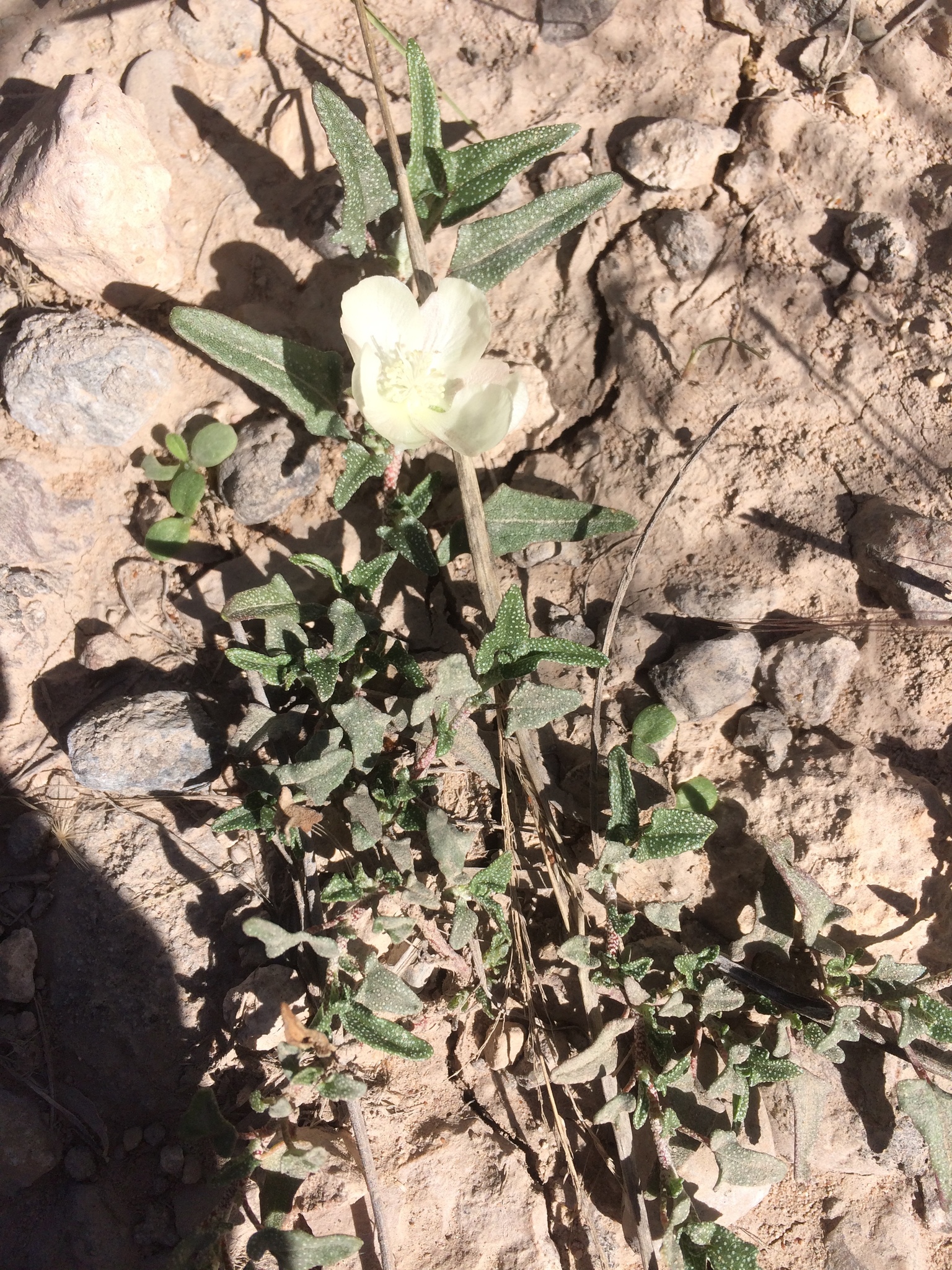
Photo credit Nathan Taylor: https://www.inaturalist.org/observations/8558418
Another thing that complicates identification is that the leaves of Malvella are oblique (asymmetric). If we are supposed to know if a leaf is wider than long, it should be important to know where to measure from. However, knowing exactly where the width is supposed to be measured from (perpendicular to the petiole or at an angle to the petiole) is not clear.
Links to types
M. leprosa (type)
M. hederacea (type)
M. lepidota (Isotype)
M. sagittifolia (Holotype)
M. leprosa (similar to type)




